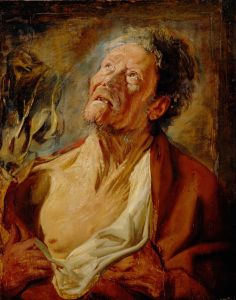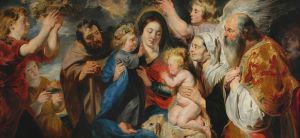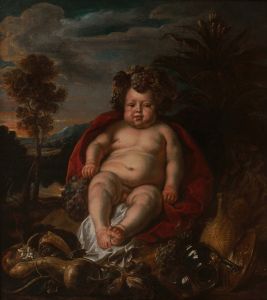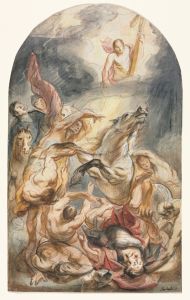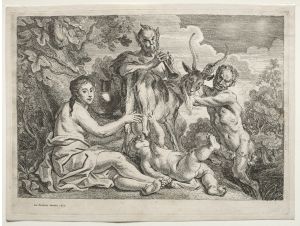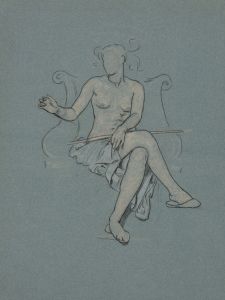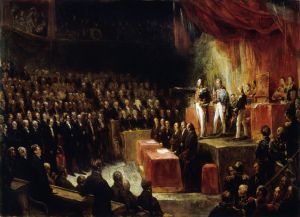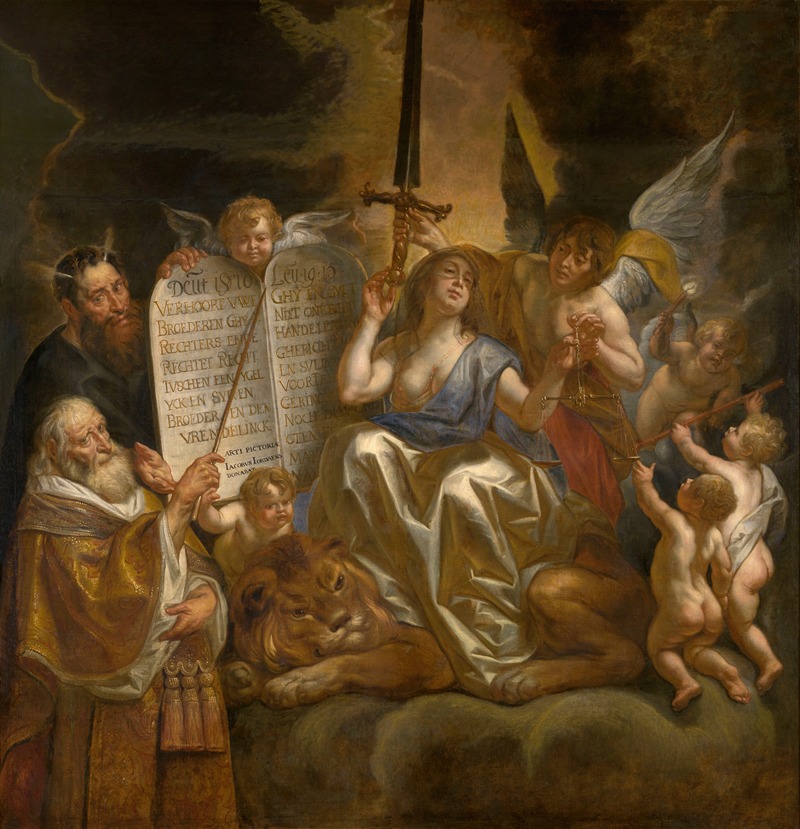
Human Law Founded on the Divine Justice
A hand-painted replica of Jacob Jordaens’s masterpiece Human Law Founded on the Divine Justice, meticulously crafted by professional artists to capture the true essence of the original. Each piece is created with museum-quality canvas and rare mineral pigments, carefully painted by experienced artists with delicate brushstrokes and rich, layered colors to perfectly recreate the texture of the original artwork. Unlike machine-printed reproductions, this hand-painted version brings the painting to life, infused with the artist’s emotions and skill in every stroke. Whether for personal collection or home decoration, it instantly elevates the artistic atmosphere of any space.
Jacob Jordaens, a prominent Flemish Baroque painter, created the artwork "Human Law Founded on the Divine Justice" during the 17th century. Jordaens was known for his dynamic compositions, vibrant use of color, and his ability to convey complex allegorical themes through his art. This particular painting is a testament to his skill in blending religious and moral themes with the artistic styles of his time.
"Human Law Founded on the Divine Justice" is an allegorical painting that explores the relationship between human law and divine justice. The artwork reflects the Baroque era's fascination with the interplay between earthly and heavenly realms, a common theme in the works of Jordaens and his contemporaries. The painting is characterized by its dramatic use of light and shadow, a technique known as chiaroscuro, which Jordaens employed to enhance the emotional intensity and depth of the scene.
In the composition, Jordaens uses a variety of figures to represent different aspects of law and justice. Central to the painting is the figure of Justice, often depicted as a woman holding scales and a sword, symbolizing fairness and the power to enforce the law. Surrounding her are other allegorical figures that may represent virtues such as wisdom, truth, and authority, each contributing to the overarching theme of divine justice as the foundation of human law.
Jordaens' work is notable for its rich detail and the expressive gestures of the figures, which convey a sense of movement and urgency. The artist's use of color is particularly striking, with warm tones that draw the viewer's eye to key elements of the composition. This use of color and light not only enhances the visual appeal of the painting but also serves to underscore the moral and philosophical messages embedded within the artwork.
The painting reflects the cultural and religious context of 17th-century Flanders, a time when the Catholic Church wielded significant influence over art and society. Artists like Jordaens were often commissioned to create works that reinforced religious teachings and values. "Human Law Founded on the Divine Justice" can be seen as a visual representation of the belief that human laws should be grounded in divine principles, a concept that resonated deeply with the audiences of Jordaens' time.
Jordaens' ability to convey complex ideas through allegory and symbolism is evident in this painting. His work invites viewers to reflect on the nature of justice and the moral foundations of law, encouraging a deeper understanding of the relationship between human society and divine order. The painting remains an important example of Baroque art, showcasing Jordaens' mastery of composition, color, and allegorical storytelling.
Today, "Human Law Founded on the Divine Justice" is appreciated not only for its artistic merit but also for its historical significance. It offers insight into the values and beliefs of the Baroque period, as well as the enduring human quest to understand and articulate the principles of justice and morality. Through this work, Jordaens continues to engage and inspire audiences, highlighting the timeless nature of the themes he explored.





